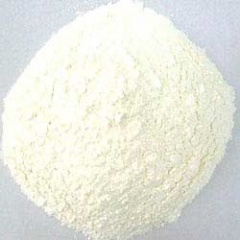Dextrin
| Infobox on Dextrin | |
|---|---|
| Example of Dextrin |  |
| Facts | |
| Origin | - |
| Stowage factor (in m3/t) | - |
| Humidity / moisture | - |
| Ventilation | - |
| Risk factors | See text |
Dextrin
Description / Application / Risk factors
Dextrin; any one of a number of carbohydrates having the same general formula as starch but a smaller and less complex molecule. They are polysaccharides and are produced as intermediate products in the hydrolysis of starch by heat, by acids, and by enzymes. Their nature and their chemical behaviour depend to a great extent on the kind of starch from which they are derived. For example, some react with iodine to give a reddish-brown colour, others a blue, and still others yield no colour at all. For commercial use dextrin is prepared by heating dry starch or starch treated with acids to produce a colourless or yellowish, tasteless, odourless powder which, when mixed with water, forms a strongly adhesive paste. It is used widely in adhesives, e.g., for postage stamps, envelopes, and wallpapers, and for sizing paper and textiles.
White and yellow dextrins from starch roasted with little or no acid is called British gum.
Yellow dextrins are used as water-soluble glues in remoistable envelope adhesives and paper tubes, in the mining industry as additives in froth flotation, in the foundry industry as green strength additives in sand casting, as printing thickener for batik resist dyeing, and as binders in gouache paint.
White dextrins are used as:
- A crispness enhancer for food processing, in food batters, coatings, and glazes, (E number 1400)
- A textile finishing and coating agent to increase weight and stiffness of textile fabrics
- A thickening and binding agent in pharmaceuticals and paper coatings.
As pyrotechnic binder and fuel, they are added to fireworks and sparklers, allowing them to solidify as pellets or "stars."
Due to the rebranching, dextrins are less digestible; indigestible dextrin are developed as soluble fibre supplements for food products.
Usually shipped in bags. Humidity may cause deterioration.











